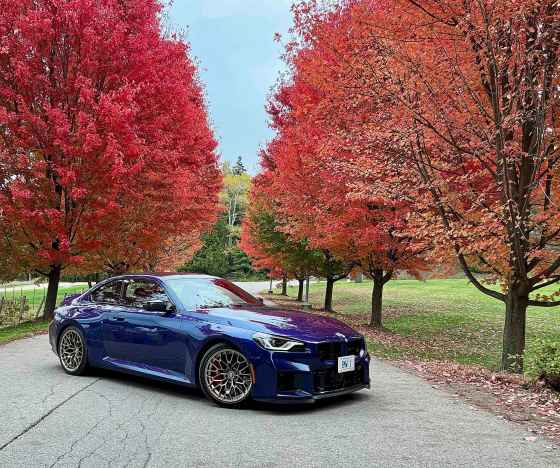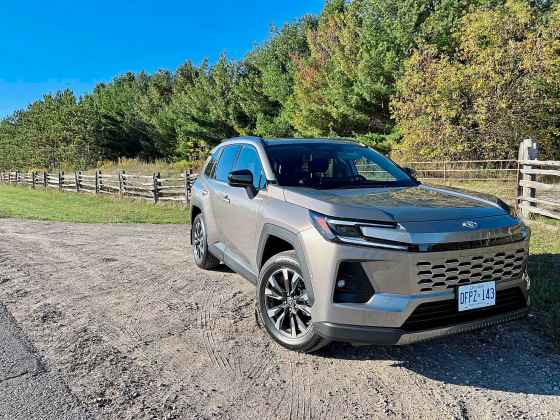|
For 40 years, members of the Automobile Journalists Association of Canada have gathered at an event called TestFest to determine the Canadian Car and Utility Vehicle of the Year.
Often held at a racetrack, for this year and last, we’ve held it at Hockley Valley Resort north of Mississauga, Ont. There’s been much change over those four decades.
The first two events named only the best in a variety of categories: for example, the best new domestic sedan for 1985 was the Volkswagen Golf, which qualified as domestic as it was built in the U.S. Foreign automakers dominated that first ’Fest, with the Golf, VW Jetta, Saab 900 Turbo 16 and Porsche 944 winning as best new import sedan, best new sports sedan and best new sports car respectively.
Advertisement
 Why this ad? Why this ad?
In 1987, the Pontiac Bonneville claimed the first Overall Car of the Year award, followed by the Lincoln Continental in 1988 and Ford Taurus SHO in 1989.
For a few years, foreign automakers swept the awards, testament to some of the quality and design issues domestic carmakers dealt with during the late 1980s and early 1990s.
It’s important to note, like new-car reviews, the awards can only speak to how the vehicles presented themselves at the time. Predicting the future, in terms of reliability, is impossible and unfair. Such explains what may seem like head-scratchers today, including the 1995 Car of the Year, the Dodge Neon, to which history has not been kind.

The 2026 BMW M2, seen at TestFest, continues BMW’s tradition of stunning sports coupes. (Kelly Taylor / Free Press)
There have been some home runs: the Mazda3 in various names has been a frequent winner. The 2005 Ford Mustang, 2003 Nissan 350Z and 2000 Ford Focus were all worthy winners.
There has also been some controversy. In 2008, the Audi R8 was named Car of the Year, to the consternation of some jurors who felt a car so out of reach for so many Canadians was unworthy. I disagreed at the time and still do today: so stunning was its styling, so powerful were its brakes, so precise was its handling and so inspiring was its engine that to disqualify it because of price would have been a disservice.
For most of the awards’ existence, only vehicles entered by AJAC automaker members, at a high cost, could qualify. For the past three years, the pay-to-play model has been abolished: every vehicle sold in Canada qualifies. Now, carmakers pay a modest fee to bring the cars they wish to showcase to TestFest and then the winners pay for AJAC’s marketing package, which gives them rights to use the logos, award images and trademarks to promote their winning vehicles. Winners have consistently exploited their victories in their marketing.
Now, the only hurdle to winning is self-inflicted: for reasons that should be obvious, jurors can only vote on vehicles they drive, so carmakers that choose not to have widespread distribution of press vehicles for journalists to drive are at a disadvantage. Of their choosing. Some carmakers, such as Mercedes-Benz, are prohibited by their parent companies from participating in awards programs. Their cars still qualify.

The 2026 Toyota RAV-4 is all-new and available only as a hybrid or plug-in hybrid. (Kelly Taylor / Free Press)
The other big change is the growth in electric vehicles. From years there was only one (Nissan Leaf), today there are 91 electric utility vehicles and 24 electric cars on the market. Those include plug-in hybrids with at least 50km of EV-only range but not regular hybrids.
My predictions for 2026
Car of the Year: Hyundai Elantra. It just has so much going right and an entry price that makes other contenders blush.
Utility Vehicle of the Year: Mazda CX-90. Mazda has fixed the issues I wrote about regarding acceleration and its styling and fuel economy are first-rate.
Electric Car of the Year: Toyota Prius Plug-in Hybrid. With a starting price of just more than $40,000, it’s one of the more affordable on the market, plus being a plug-in doesn’t suffer range anxiety, as it can keep driving for as long as it has gas.
Electric Utility Vehicle of the Year: Hyundai Ioniq 9. It features arguably the most forward-looking design, with a sleek, swept profile and interior that wouldn’t be out of place in an Arthur C. Clarke sci-fi flick. With a price starting just over $60,000, it’s competitive with its rivals.
|

